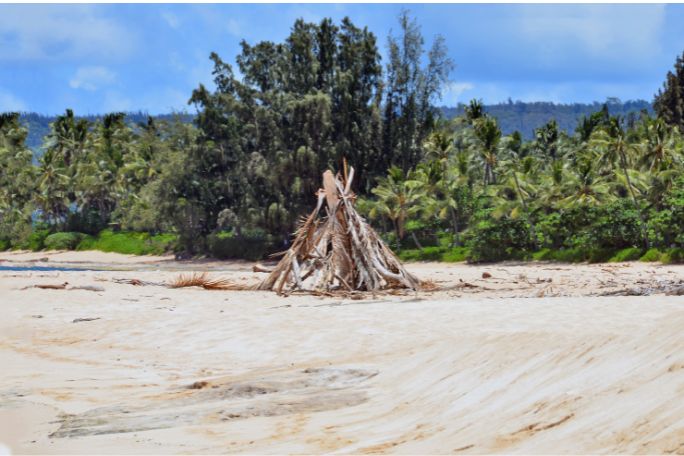Lesson summary
Students are given the opportunity to study a text that presents the theme of survival/castaway. The task allows flexibility in the type of text and how students’ understanding of the text is communicated and assessed.
Learning intentions:
Students will...
- learn how to identify the way writers use narrative devices such as plot, setting, characters, structure etc, to create a world within the novel/film
- use comprehension and thinking skills to understand the world of the text
- learn how characters can embody views and values and reflect the world of the novel/film
- be able to identify and discuss the differences and similarities found in texts that deal with similar topics or themes.
Success criteria:
Students can...
- demonstrate their understanding of the texts they read or view
- demonstrate their understanding of narrative devices.
Lesson guides and printables
Curriculum links
Select your curriculum from the options below.
Lesson details
Skills
This lesson is designed to build students’ competencies in the following skills:
- collaboration
- social skills
- problem solving
- curiosity
- leadership
- adaptability
- digital literacy
- communication
- reflection
Curriculum Mapping
Australian Curriculum (v9.0) content description:
Year 6 English:
- Identify responses to characters and events in literary texts, drawn from historical, social or cultural contexts, by First Nations Australian, and wide-ranging Australian and world authors (AC9E6LE01)
- Identify similarities and differences in literary texts on similar topics, themes or plots (AC9E6LE02)
General capabilities: Literacy, Critical and Creative Thinking.
Cross-curriculum priority: Sustainability
Relevant parts of Year 6 achievement standards: Students read, view and comprehend different texts created to inform, influence and/or engage audiences.
UN Sustainable Development Goals
UN SDG 4: Ensure inclusive and equitable quality education and promote lifelong learning opportunities for all
- Target 4.7: By 2030, ensure that all learners acquire the knowledge and skills needed to promote sustainable development, including, among others, through education for sustainable development and sustainable lifestyles, human rights, gender equality, promotion of a culture of peace and non-violence, global citizenship and appreciation of cultural diversity and of culture’s contribution to sustainable development
Resources Required
- Chosen text(s)
- Teacher worksheet
- Whiteboard or paper for anchor chart
- Worked examples for teaching comprehension strategies.
- Writing materials
Additional Info
This is an original Cool+ lesson.
Level of teacher scaffolding: High - there is a great deal of opportunity for explicit teaching and facilitated discussion within these series of lessons.
Related Professional Learning
Cool+ Micro PL: Creating Immersive, Playful Learning
Quick Summary: This course will help you build confidence and skills in creating immersive learning experiences and offer ways to engage students deeply.
Cool+ Micro PL: Playful Ideas: Primary Literacy
Quick Summary: This micro PL gives you a range of playful ideas for use in primary schools with a focus on literacy; alongside the pictures will be provocations and reflections to help you continue to improve your practice. These ideas are there to think about how to make literacy fun and enjoyable - especially for students who struggle to build mastery of language.


Welcome back!
Don't have an account yet?
Log in with:
Create your free Cool.org account.
Many of our resources are free, with an option to upgrade to Cool+ for premium content.
Already have an account?
Sign up with:
By signing up you accept Cool.org's Terms and Conditions(Opens in new tab) and Privacy Policy(Opens in new tab).